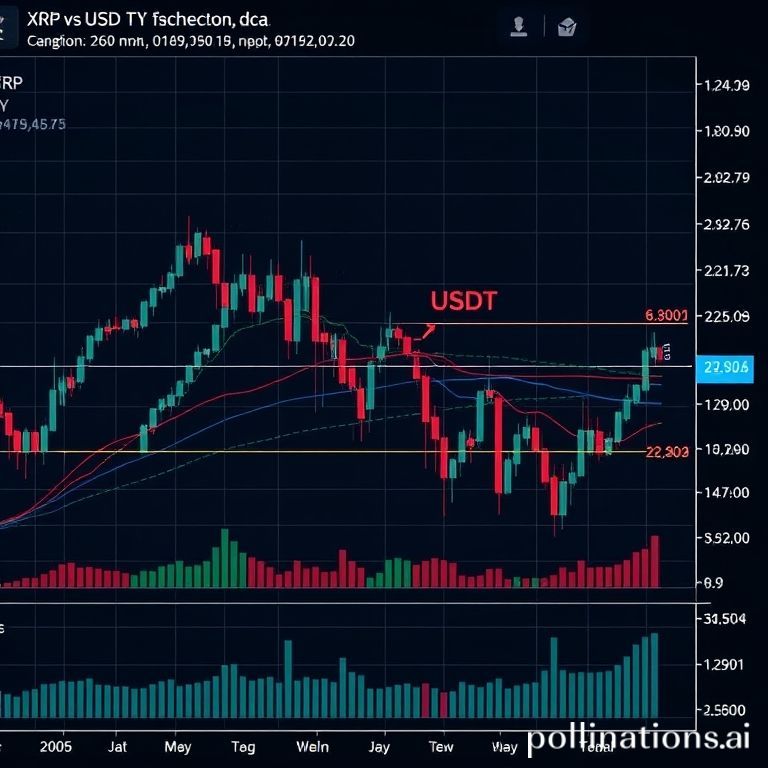
David Schwartz, Chief Technology Officer at Ripple, recently articulated a compelling vision for the future of finance, asserting that major internet companies are on an unavoidable path toward adopting blockchain-based financial systems. His remarks, made during the inaugural episode of Ripple’s "Onchain Economy" video series, highlighted that decentralized infrastructure is emerging precisely when it's most needed, poised to address limitations that traditional financial rails struggle to overcome. Schwartz framed this shift not as a speculative venture into uncharted crypto territory, but as a pragmatic evolution driven by the tangible demands of modern enterprises.
Big Tech's Unmet Financial Needs Drive Blockchain Adoption
Schwartz posited that the convergence of technology and finance is an inevitability, irrespective of blockchain's role. He specifically pointed to hyperscalers and platform-centric corporations like Amazon and Uber, arguing that these entities have sophisticated financial service requirements that surpass the capabilities of the existing system. This deficiency, he contends, creates a fertile ground for blockchain technologies, which are "in the right place at the right time" to fill this void. The core thesis is straightforward: the impetus for this shift isn't about converting conventional banks to cryptocurrency evangelists. Instead, it's about providing software-driven businesses with the operational necessities they require—such as programmable money, continuous settlement mechanisms, and composable financial workflows that are intrinsically linked to a modern digital economy. These functionalities are foundational for businesses operating at global scale, often with real-time transactional needs that traditional batch processing and intermediated systems cannot efficiently support.
Furthermore, Schwartz deliberately distanced his argument from the more volatile and speculative facets of the crypto market. He cautioned against focusing solely on "collectibles" or pursuing "very high reward at very high risk." Instead, he emphasized a broader definition of decentralized finance (DeFi), encompassing smart contracts and the underlying infrastructure, predicting that it will "take a huge bite out of TradFi over the next couple of years." For this to materialize, Schwartz stressed a crucial condition: the blockchain sector must prioritize delivering financial services that genuinely meet user needs, all while integrating institutional-grade security and regulatory compliance. This pragmatic approach underscores the necessity for robust, reliable, and user-centric solutions over speculative hype.
Decentralization and Compliance: A Synergistic Future
A pivotal theme of Schwartz’s discussion was the reconciliation of decentralization with institutional adoption and compliance. He challenged the notion of inherent tension between these two concepts, stating, "I don’t think there’s a tension between institutional adoption and decentralization." According to Schwartz, institutions seek neutrality from a base layer, a characteristic inherently offered by public blockchains. He elaborated that ecosystems are drawn to Layer-1 blockchains precisely because of their decentralization and neutrality. This neutrality, he argued, will be perceived by institutions as a positive attribute rather than a governance liability. It enables multiple counterparties to collaborate and transact without ceding control or reliance on a single, centralized gatekeeper, fostering an environment of trustless cooperation and transparency that is highly desirable for complex financial operations.
These insights arrive amidst Ripple’s strategic efforts to position the XRP Ledger (XRPL) as a premier platform for institutional on-chain finance. Ripple envisions XRPL facilitating a range of advanced financial applications, including seamless stablecoin flows, the robust tokenization of real-world assets, and eventually, a native credit and lending layer. This ambitious roadmap is underpinned by the integration of compliance-enabling primitives designed to meet stringent regulatory requirements. A recent analysis published by Ripple on its corporate site on September 22nd highlighted XRPL's significant traction, noting over $1 billion in monthly stablecoin volume and its strong ranking among top chains for real-world asset activity. The company’s vision includes verifiable credentials, "Deep Freeze" asset controls for enhanced security, and a planned protocol-level lending layer, all demonstrating how neutral public ledgers can effectively cater to institutional needs without compromising decentralization.
Further illustrating this approach, Ripple earlier this year proposed a concept for a permissioned Decentralized Exchange (DEX) specifically tailored for credentialed market access on XRPL’s native exchange. This innovative approach aims to harmonise Know Your Customer (KYC) and Anti-Money Laundering (AML) obligations with the inherent advantages of a public order book, such as enhanced liquidity and transparency. While the implementation of these underlying standards remains subject to network governance, the design itself provides a clear blueprint for how regulated entities can operate within a decentralized ecosystem. Crucially, this model allows them to avoid the fragmentation of liquidity that often occurs when financial activities are siloed into private, permissioned environments, thereby offering a more integrated and efficient solution for institutional participation in DeFi. As these developments unfold, the price of XRP was noted at $2.76 at the time of publication.
